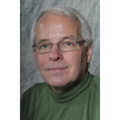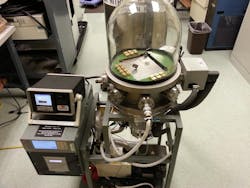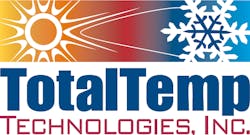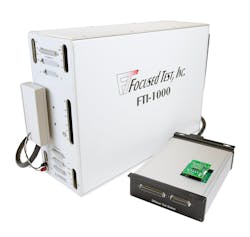Special Report: Effective test and measurement drives wide-bandgap device applications
View this article in the March 2020 Evaluation Engineering issue
Download this article in .PDF format.
Power semiconductor test presents many challenges, requiring the accurate measurement of electrical parameters in various environmental conditions. Thermal test, specialized and general-purpose electronic instrumentation, and high-speed, high-current interconnect all have a role to play in bringing high-quality wide-bandgap devices to market and driving their penetration into applications ranging from renewable energy to electric vehicles. And power silicon devices continue to have a role to play.
Thermal test specialist
TotalTemp Technologies focuses on thermal test, and John Booher, CTO, pointed out that customers have a lot of choices in that field. “Are all those choices really necessary?” he asked. “They are not really required, but in a world where every aspect of work has the more, better, faster mindset, thermal testing is definitely no exception. Any old temperature chamber around the lab can perform a thermal test, but it’s likely going to be far from optimal.”
In contrast, he said, “TotalTemp provides thermal testing solutions that are optimum for your testing requirements. Thermal Platforms by nature are faster and offer access to the device at temperature. Convection shrouds and traditional convection temperature chambers also have their place as good choices.” He added that TotalTemp uses the Synergy Nano controller to provide solid functionality, remote and local programmability, and many time/cost-saving options, including alarms, remote notifications, advanced control algorithms, logging, and network printing.
Booher pointed out that thermal testing remains important for high-power wide-bandgap devices. “Devices exposed to harsh thermal environments such as aircraft systems or cell-tower base-station gear need to be verified for the environment they are expected to perform in,” he commented.
He said his company offers a line of high-performance customizable benchtop convection temperature chambers, new sizes of thermal platforms with more capacity (with sizes up to 450 square inches), hybrid benchtop chambers with the combined benefits of a thermal platform and a temperature chamber (“cutting test times in half from thermal platforms that are already pretty speedy,” he said), a humidity control option for the hybrid benchtop chamber, and new and improved clamping systems. He added that device temperature sensors and optional advanced control software optimize settling times and setpoint verification. Specific products include the SD49 cryogenically cooled thermal platform.
Booher cited a key trend. “Everybody needs to get more with less (time) in our competitive economy,” he said. “Thermal platforms let techs perform efficient and verifiable testing, completed in less time, resulting in more reliable products.” Customers need speed as well as verifiable reports delivered, he emphasized.
Electrical measurements
According to Ron Wilcox, senior director of power test engineering at Analog Devices Inc., “Twenty-five years ago, I did not think one would be concerned with microvolts and picoamps in power semiconductor test, but we now find ourselves measuring just those, and often in the face of challenges like > 100 VCM or in noisy environments.”
He continued, “A big trend continues to be achieving higher power density—the ability to deliver more power from a smaller package. This continues to drive package evolution to manage thermal and current density issues to get the power to the load.”
Wilcox added, “Power semiconductor test [presents] myriad challenges involving ever-increasing accuracies in voltage, current, and time measurements, with headwinds of higher currents, faster edges, and greater risk associated with controlling high-energy events. Increasing digital content for control and metrology of power semiconductors requires advanced mixed-signal test capabilities, and subnanosecond events require RF techniques in the hardware design of test circuits. Almost every specialized test discipline is necessary to properly test modern power products. Add the element of danger, and one needs the Harrison Ford of test engineers!”
Wilcox continued, “The ability to change loop response in ‘VIs’ or ‘SMUs’ helps decrease test time and prevent possible DUT damage. Clean transitions during mode and range changes is also paramount to preventing ‘walking-wounded’ devices being generated by test, and possibly shipped to customers.”
The company also introduced an inductive switching test station for FTI-1000 test system; it performs reverse-bias safe operating area (RBSOA), EON/EOFF (energy loss), and other switching tests on GaN and SiC discrete devices.
Also for the FTI-1000, the company debuted a multidie test option for wafer-sort/circuit-probe (CP) testing of MOSFET wafers, supporting up to 16 die in parallel, including adjacent die test capability. It performs DC and unclamped inductive switching (UIS) tests to 1,000 V, 100 A.
The company also supports high-voltage SiC transistor test with a DC power source to 5 kV and UIS avalanche voltage > 3 kV, and it offers a gate-charge (QG) calibration technique for power transistors with QG < 1 nC. The company will be highlighting these capabilities at APEC.
Peter Hancock, president of Focused Test, identified some key applications the company addresses: GaN HEMT test for power conversion to 1,000 V, GaN IC test for power conversion, GaN IC test for lidar applications in autonomous vehicles, and SiC test for power conversion and motor drivers > 2,000 V. Key challenges, he said, include minimizing stray capacitance to perform dynamic RDS(ON) test of GaN HEMTs with less than 1 ms of measurement delay as well as minimizing stray capacitance and drain-gate crosstalk for timing tests of GaN HEMTs with tON/tOFF less than 1 ns at VDS greater than 800 V.
Hancock cited several trends. The need for improved efficiency is driving power semiconductor technology for cloud computing centers and solar installations, whereas consumer products benefit from efficiency improvements as well as reduced size and cost. And electric and autonomous vehicles require efficiency plus reliability.
As for what customers are looking for, Hancock said, key factors are ease of use and open software that allows users to modify test routines without the support of the test vendor. Also important is a willingness to partner. “Wide-bandgap tests are not yet well-defined, and test needs are changing fast. Customers need the test vendor to partner and respond quickly to new requirements.” In addition, he noted, “OSAT’s have limited test capability in wide bandgap. Focused Test offers a ‘Flex Capacity’ program for OSAT’s geared towards wide-bandgap applications.”
Focused Test will present the FTI-1000 in many configurations at APEC, March 8-12 in New Orleans.
IGBTs, Si MOSFETs, and SiC devices
Keysight Technologies has recently introduced the PD1500A dynamic power-device analyzer/double-pulse tester, along with software, fixtures, and probes. “It is a complete double-pulse test solution for IGBTs, Si MOSFETs, and SiC devices, according to Ryo Takeda, power semiconductor solution architect; Bernhard Holzinger, power semiconductor technical architect; and Mike Hawes, power solution consultant.
“Repeatable and reliable measurement is the key challenge to designing a double-pulse test system for WBG devices,” they said. “Because of the quicker switching speeds and faster edges, any parasitic inductance and capacitance in your power loop along with gate-loop design of the circuit can significantly affect your measurement results. In turn, this will provide unrepeatable and incorrect parameter extraction from these waveforms.”
They added, “Because of the higher power applications for WBG devices (for example, solar inverter, traction inverter), thermal management is critical to the design of power converters. Keysight’s PD1500A enables DPT parameters to be determined over a controller temperature range.”
Keysight focuses on key end-use applications including electric-vehicle power-converter test and alternative-energy power-converter test. In addition to the power-semiconductor dynamic characterization requirements, thoroughly testing the efficiency, performance, and reliability of these power converters is critical to supporting the growth of these markets, said Takeda, Holzinger, and Hawes. “Keysight supplies additional solutions for EV power converters and grid-edge power-converter applications,” they added.
“The biggest trend in power semiconductors is the introduction of new wide-bandgap power semiconductor technologies,” they said. “They have significant advantages over Si-based [solutions] (that is, switching speeds, efficiency, thermal properties, higher voltages), but they are not as well developed and characterized. Therefore, the reliability is not sufficient for some applications. There will be a lot of focus on improving the reliability of the WBG semiconductors, so mission-critical applications (EV, alternative energy) will transition to these new technologies.”
The key capability is repeatable and reliable dynamic characterization (DPT) of faster switching, higher voltage power semiconductors, they said, adding, “A complete DPT solution will significantly improve customer’s experience in characterizing the dynamic parameters of power semiconductors. Effective and repeatable DPT design is surprisingly difficult.”
The design of a DPT system presents many challenges because of the combination of high frequency and high power. “RF effects need to be considered, which is not typical for power-converter designers,” they said. “Minimizing parasitic inductance and capacitance in the power loop and the gate loop is critical for repeatable and reliable measurements. Additionally, high-frequency current measurement is extremely difficult with no perfect solution.”
At APEC, Keysight will demonstrate products including B1505/6A static device analyzer/curve tracer, the PD1500A dynamic device analyzer/double-pulse tester, and the PD1000A power-device measurement system for advanced modeling. Keysight will also present a paper regarding the challenges presented by testing high-frequency power semiconductor technologies (IGBTs, SiC, GaN).
SMUs and analyzers
Keithley, a Tektronix company, has introduced several products for power semiconductor test. For high-power semiconductor characterization, the company debuted the Keithley 2470 High Voltage SourceMeter, which offers a 1.1-kV output, 10-fA resolution, and 0.012% basic measurement accuracy.
“As SiC and GaN devices drive the need for more efficiency, characterizing their RDS(ON/OFF) behavior becomes more critical,” said Wilson Lee, technical marketing manager, Americas. “The 2470 fills a vital position for engineers either in a production setting or for benchtop work.”
Lee said the company also recently launched two SMU modules for its 4200A-SCS parameter analyzer. “These SMUs address the needs of modern production environments, where high capacitances of test setups become unavoidable but low current measurements are still required,” he said. “Low currents get harder to measure as you increase capacitance due to increased time constants requiring longer settling times. The 4201-SMU and 4211-SMU modules offer greater max capacitance specifications to meet the needs of future testing.”
The company has also launched a wide-bandgap reference test system. “This reference design represents an optimal system for making critical in-circuit, real-time measurements on GaN and SiC power semiconductors,” Lee said. “It addresses the needs for high-bandwidth, high-voltage, high-common-mode-rejection measurements that prove extremely difficult with these fast rise-time devices in half-bridge and full-bridge topologies. The system is available as a kit; however, most users customize it to fit their specific applications. The system includes a 5 Series oscilloscope with a power measurement and analysis package installed and IsoVu optically-isolated differential probes to enable fast rise-time measurements while eliminating common mode noise.”
Lee added that the Tektronix 4/5/6 Series 12-bit oscilloscopes offer the higher vertical resolution that allows engineers to make accurate measurements over the higher dynamic ranges becoming commonplace as switching voltages increase with GaN and especially with SiC. He said the company has also “…added the ability to synchronously observe time- and frequency-domain activity, which is valuable for EMI troubleshooting made more challenging by fast, high-voltage switching. We call this ‘Spectrum View.’”
The company also offers an arbitrary/function generator with double pulse testing. “To measure turn-on and turn-off characteristics, the new AFG31000 now comes with the ability to generate double-pulse test signals from the front panel,” Lee said. “Test signals are specified by voltage level and the on-time and off-time for the two pulses. This makes the AFG31000 the first such AFG with this functionality built-in.”
At APEC, the company will present a variety of focused application demos—including power semiconductor characterization, wide bandgap power conversion; a 3-phase motor drive; EMI debug, double pulse test, and power integrity.
Newark offers the Keithley 2470 High Voltage SourceMeter, and James McGregor, global head of Test and Tools, elaborated on its capabilities. “It offers 4-quadrant precision voltage and current source/load coupled with measurement on a touchscreen user interface. The 2470 SMU adds capabilities in measurements such as breakdown voltage, leakage current, isolation testing, hipot, and dielectric withstanding tests. With the 2470’s 1,100 V and 10 fA capability, it is optimized for characterizing and testing high-voltage, low-leakage devices such as SiC and GaN wide-bandgap power semiconductors.”
McGregor called the 2470 SMU just one example of a product in the distributor’s Test and Tool range, which has expanded by over 4,000 products globally in the last year. “Newark remains committed to equipping its customers with the very best products from leading suppliers and has invested over $5 million in Test and Tools alone in 2019,” he said.
Newark also offers options for power-semiconductor test. “The Keithley Model 8010 high-power device test fixture provides safe and easy connections for testing packaged high-power devices up to 3,000 V and 100 A. It also provides connections for Keithley’s source/meter units. Offering fixtures and other additional options is one way in which Newark supports the engineering community at every stage. Newark’s portfolio of test equipment is all inclusive; engineers can find solutions to all their test needs in one place.”
McGregor added that the very low leakage currents measured in power semiconductors impose challenges related to sufficient noise immunity at the low currents. “It may be necessary to use special triaxial cables, of which Newark offers several options, to overcome this,” he said. “In addition to triaxial cables, special safety probes are needed when measuring high voltages typical of power semiconductors. Newark offers a variety of low-noise triaxial cables and high-voltage safety probes from manufacturers such as Keithley, Keysight, and Pomona, supporting engineers as they overcome these challenges and enabling them to test safely and confidently.”
Scopes and options
Rohde & Schwarz offers several products for power semiconductor test, including R&S RT-ZHD high-voltage differential probes; R&S RT-ZPR20 and R&S RT-ZPR40 power-integrity probe; and the R&S RTx-K31 power-analysis option and R&S RTx-K36 Bode-analysis option for the company’s oscilloscopes.
In addition, “The R&S RT-ZD10 active differential probe, together with the R&S RT-ZA15 external attenuator, permits the measurement of voltages up to ±60 VDC/±42.4 VAC (peak) at a bandwidth of 1 GHz,” said Marcus Herdin, market-segment manager for industry, components, research, and universities at Rohde & Schwarz.
Herdin emphasized EMI. “There are many challenges, but meeting EMI compliance has become a key challenge for designing wide-bandgap semiconductor converters as switching times and therefore unwanted emissions increase,” he said. “Debugging designs early in the design phase has become increasingly important. Oscilloscopes that can assist in EMI debugging are very relevant.”2
When asked about features, Herdin said customers value the 16-bit HD mode of the company’s R&S RTE, R&S RTO, and R&S RTP oscilloscopes as well as advanced analysis capabilities like flexible math mode and PWM track functionality. The oscilloscopes plus an EMI receiver and 4-line LISN for conducted EMI tests will be on display at APEC. Topics Rohde & Schwarz experts will discuss at the event include EMI debugging and compliance, control-loop analysis (Bode plot), and general-purpose power-electronics test with oscilloscopes.
Interconnect
Samtec positions its new mPOWER ultramicro power connectors as suitable for high-current delivery in several applications. The company currently offers board-to-board solutions and has cable-to-board options under development, according to Terry Emerson, product marketing manager. Samtec’s mPOWER UMPT/UMPS Series connectors come with several options, he said, including number of blades (two to five), a number of stack heights (5, 7, 10, and 12 mm), tin or gold plating, and optional weld tabs for added ruggedness.
mPOWER products find use in applications such as mobile-device charging, motor control, automotive, industrial, green energy, and grid control. “Since mPOWER can be used with a wide variety of signal connectors or as a standalone unit, it has found a home in applications from industrial to medical,” Emerson said.
When asked about industry trends, he said, “System form factors are getting denser. Engineers want to cram as much power delivery into as small space as possible.” He added that mPOWER can carry up to 21 A per blade in a small form factor.
“For connectors, it really comes down to size vs. efficiency of power delivery,” Emerson said. “Customers want to dedicate as little PCB space to power delivery as possible while being confident that their application won’t have issues. mPOWER checks all of those boxes.”
Sources for power test
Finally, according to Brian Hsu, USA product marketing manager at Preen AC Power Corp., the company’s AFV Series programmable AC power source and ADG series programmable DC power supply have applicability to semiconductor test—specifically, power-module test and semiconductor burn-in-chamber test. He said that in the past customers may have used a motor-generator set to vary frequencies to simulate different grid systems, but such sets exhibit high harmonic and audible noise and poor regulation. Preen AC Power’s alternatives will be on exhibit at APEC.
For more, see this issue’s special report of power supplies and loads, and look for a subsequent article on software for power applications.
REFERENCES
1. GaN HEMT Dynamic Rds(on) Test, White Paper, Focused Test, 2017.
2. “EMI debugging of embedded power electronics designs,” Solution Page, Rohde & Schwarz.
About the Author

Rick Nelson
Contributing Editor
Rick is currently Contributing Technical Editor. He was Executive Editor for EE in 2011-2018. Previously he served on several publications, including EDN and Vision Systems Design, and has received awards for signed editorials from the American Society of Business Publication Editors. He began as a design engineer at General Electric and Litton Industries and earned a BSEE degree from Penn State.


